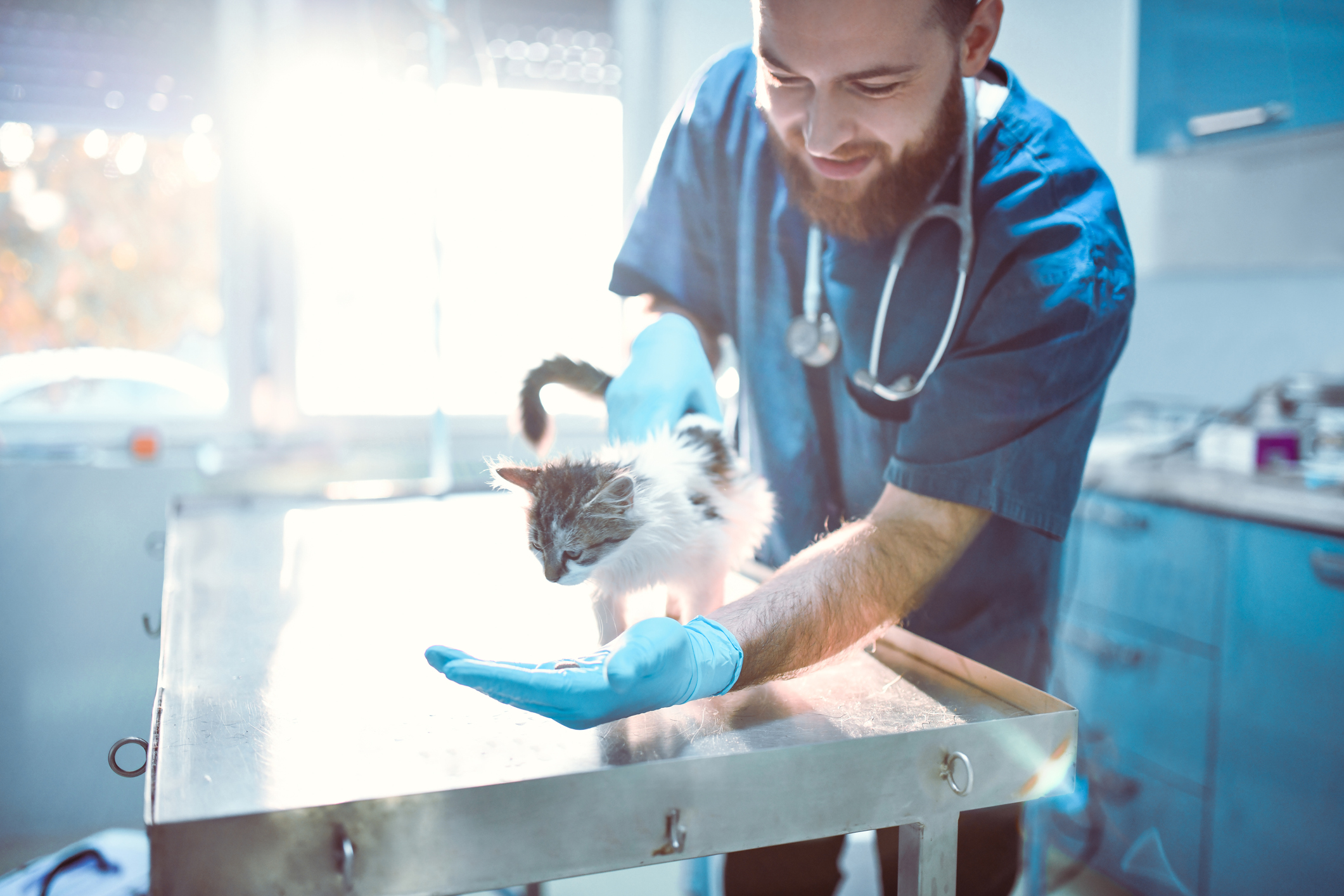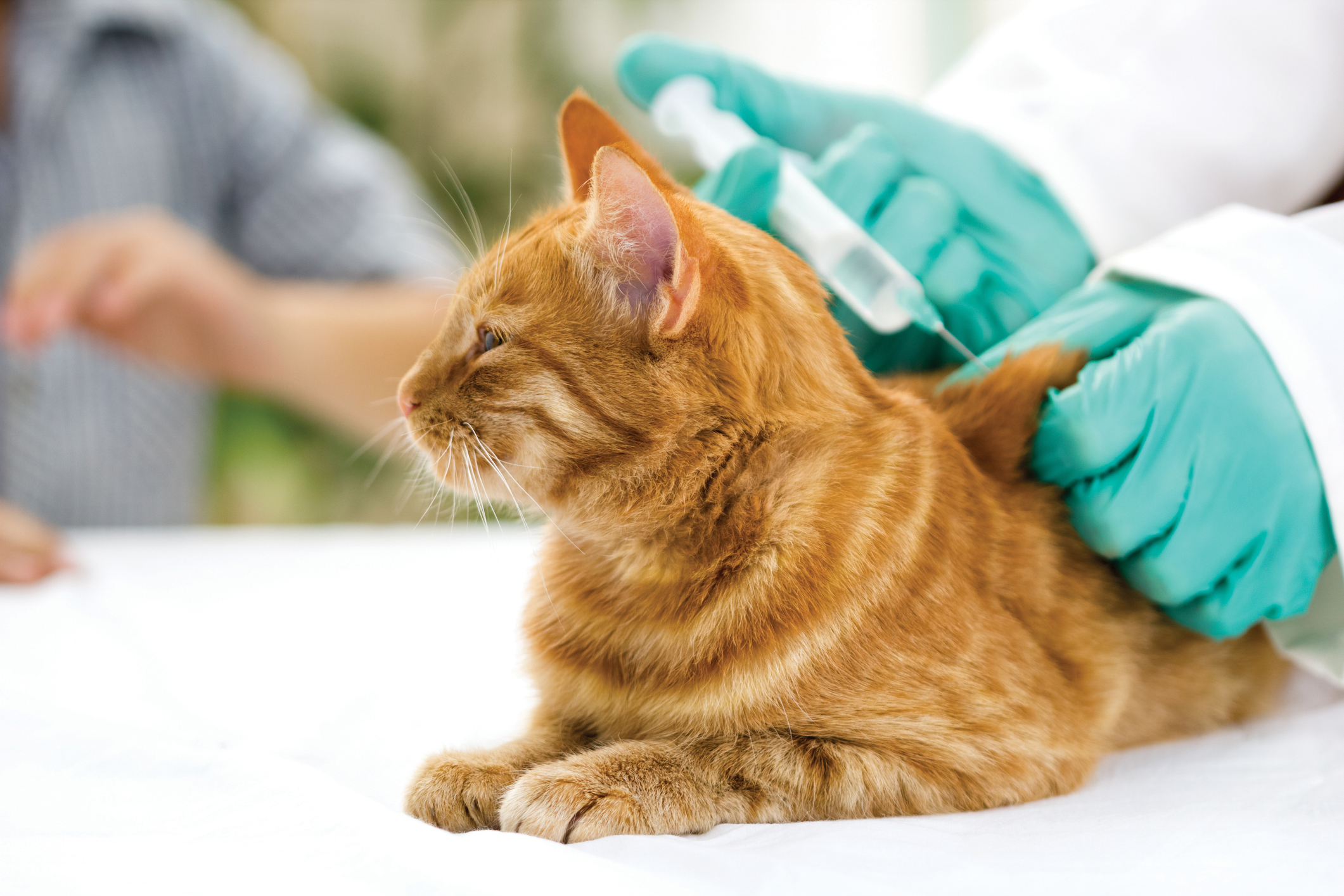
Why It's So Important to Protect Your Cat Against FeLV
During your cat’s routine veterinary visits, your vet has probably recommended a vaccine against feline leukemia virus, or FeLV. Unfortunately, many people don’t understand what FeLV actually is and why it’s so harmful to our feline friends.
Because it is one of the leading causes of death in cats, pet parents are urged to learn more about and protect their cat from this dangerous disease.
The dangers of FeLV
FeLV is one of the most common infectious diseases found in cats worldwide. The dissemination of a FeLV vaccine has significantly reduced the disease’s prevalence, but it still affects large populations of outdoor cats, in particular.
Despite what its name suggests, FeLV is not a form of cancer. It is actually a viral infection. FeLV is a retrovirus—a type of virus that inserts a copy of its genome into the DNA of a cell. After this happens, the cells replicate, spreading more of the virus and making it harder to fight.
However, FeLV is one of the most common causes of cancer in cats because of what it does to the immune system. It is known to cause cancers like lymphoma and leukemia, as well as various blood disorders. Additionally, due to its replication pattern, the virus can cause severe immunodeficiency that makes seemingly minor infections or diseases much more serious.
FeLV progresses in two stages, and not all cats exposed to the virus will succumb to progressive disease. In the early stage, it is detectable in the blood. However, the infected cat may develop an immune response strong enough to destroy the virus and eliminate it.
In the second stage, FeLV has replicated enough to affect bone marrow and other crucial tissues. At this point, most infected cats will be infected for life. Cats with this stage of the virus live an average of three years after diagnosis.
One of the most challenges aspects of FeLV is spotting it. Even in more advanced stages of infection, FeLV does not present itself immediately in most cats. Instead, it causes a gradual deterioration of the cat’s health over time.
Symptoms of infection may include:
- Loss of appetite
- Poor coat and skin health
- Pale gums
- Swollen lymph nodes
- Persistent fever
- Gingivitis
- Repeated skin, bladder and upper respiratory infections
- Diarrhea
- Eye conditions
- Behavioral changes
- Seizures
Cats with FeLV are extremely contagious and shed the virus quite rapidly through saliva, urine, feces and milk. It’s most commonly spread to other cats through bite wounds, grooming and (rarely) sharing litter boxes or food and water bowls. FeLV can also be passed from an infected mother to her kittens in utero. FeLV cannot be spread to other animals or humans.

FeLV poses the highest risk to young kittens with underdeveloped immune systems. This is one of the many reasons that kittens should not be allowed outside until they are fully vaccinated. Without this protection, a kitten could be bitten or otherwise infected by a stray cat carrying FeLV. Older cats, meanwhile, appear to have a greater resistance against FeLV, reducing their risk of progressive disease.
Can FeLV be managed?
Unfortunately, there is no cure for FeLV. Infected cats with advanced stages of the virus must be given extra care for their health and should be monitored for any secondary conditions that are worsened by the presence of the virus.
After a diagnosis is given, owners of FeLV-positive cats generally need to monitor their cat’s weight, food intake, activity level and behavior. Additionally, vets typically recommend twice-yearly exams in FeLV-positive cats to ensure the cat stays as healthy as possible.
Cats who develop secondary health problems as a result of FeLV are generally treated for those problems as usual. However, due to the impact on their immune system, these cats may require longer treatment and recovery periods.
Ultimately, paying close attention to a FeLV-positive cat’s health and supporting their immune system can help them live longer, more comfortable lives.
Prevention is key to stopping FeLV

Because there is no cure for this contagious disease, the safest thing you can do for your cat is work to prevent their exposure to FeLV. It’s critical that your cat be kept away from FeLV-positive cats, both within your home and outside.
It’s unwise to add new cats to your home if you already have a cat infected with FeLV. If you do, the FeLV-positive and FeLV-negative cats should be separated. FeLV-positive cats should also be spayed or neutered to prevent them from passing the infection to a new litter.
Furthermore, it’s generally recommended that cats be vaccinated against FeLV, especially if they go outside unsupervised. Although the vaccine will not be effective in 100 percent of cases, it has been shown to reduce the number of FeLV infections.
By staying informed about FeLV and actively working to protect your cat from being exposed, you can shield their health and give them the greatest chance of a long, healthy and happy life.


